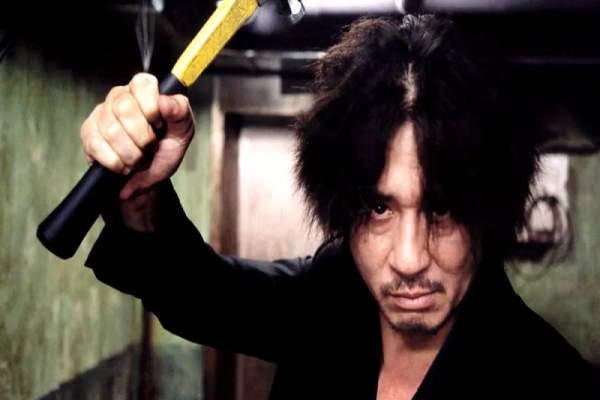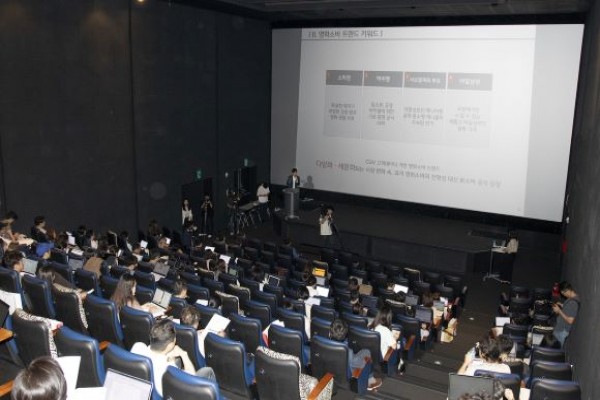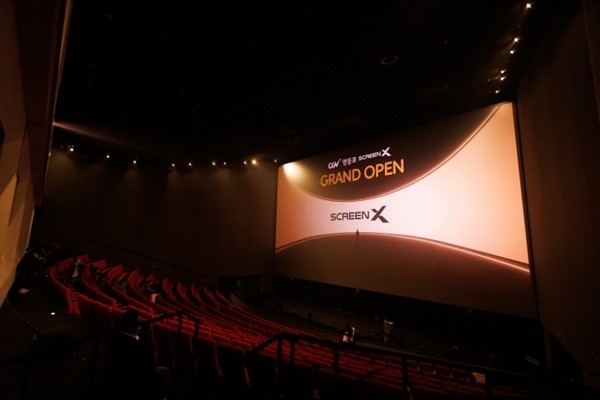130, Suyeonggangbyeon-daero,
Haeundae-gu, Busan, Republic of Korea,
48058
CGV ARTHOUSE’s Head of Theater Department, PARK Ji-ye
Jun 05, 2018
- Writerby KIM Su-bin
- View2557
“I want theaters to be spaces where inspiration and stimulation are in abundance”

Launching in 2004, CGV ARTHOUSE was the first to plan various retrospectives, panel discussions, and seminars, which resulted in an expansion of the concept of theater as space. Starting in 2016, they dedicated an exhibition space to filmmakers who played an important role in the development of Korean films and spotlighted their achievements through the “Korean Filmmaker Dedication Project”. This year, they decided to select for a digital remastering and a theatrical re-release films having played a significant role in the history of Korean films, through the “Korean Film Dedication Project”. The first of these titles is LEE Chang-dong’s A Peppermint Candy (2000). We met with department head PARK Ji-ye to learn more about these two recent projects as well as the other activities of CGV ARTHOUSE.
What is your role at CGV ARTHOUSE?
=I’m the head of the theater department. Our department is in charge of the 24 CGV ARTHOUSE-branded theaters, and we organize film Q&As, live talks, arthouse classes, and retrospectives. Another big role we have is promoting the screenings of the CGV ARTHOUSE theaters.
Your team chose A Peppermint Candy as the first film to benefit from the “Korean Film Dedication Project”. Is there a reason for choosing this title?
= A Peppermint Candy was released on January 1st, 2000, and as such we can say this title brought Korean films into the 21st century. It’s also a title that was invited to the Directors’ Fortnight section of the Cannes Film Festival, allowing people across the world to discover director LEE Chang-dong. In addition, this film earned SUL Kyung-gu and MOON So-ri recognition. As a depiction of how the tragedies of history end up destroying the mind of individuals, its unique narration proved how strong Korean film storytelling can be. It’s an important piece that helps us perceive the world of LEE Chang-dong, who recently came back after eight years with Burning. That’s why we wanted to digitally remaster the film and give people the opportunity to discover the film through a new experience.
You’re running the “Korean Filmmaker Dedication Project” as well as the “Korean Film Dedication Project”.
=“Korean Filmmaker Dedication Project” first started in order to show our appreciation to the filmmakers who brought Korean cinema to be where it is today. I believe looking back at those who played an important role in Korean film history will become fundamental as we dream of the future of the industry. At our CGV ARTHOUSE theaters, we have displayed the names of Korean filmmakers who played important roles in the Korean film history and designed exhibitions and specific screening rooms highlighting their achievements. They’re called “dedication theaters”. In 2016, we opened the IM Kwon-taek Theater (CGV Seomyeon) and the AHN Sung-ki Theater (CGV Apgujeong), and in 2017, we launched the PARK Chan-wook Theater (CGV Hyundai I-Park Mall). We’re working on another dedication theater for an opening this year. While these theaters show respect to the filmmakers, “Korean Film Dedication Project” is aiming to not only show appreciation to the filmmakers but to spotlight timeless masterpieces under a new light.
Are you following specific criteria for the selection of films or filmmakers?
=It’s a very hard process to select the filmmaker after which to name a dedication theater. Filmmakers and artists who have made great achievements and have been determinant in the international exposure of Korean films are our priority. On top of that, if they have set good examples to their junior filmmakers, we believe they’re the best candidates. We go through intense research, discussions, and even receive advice from external experts. The same goes for the film projects. They must have both artistic and commercial importance in Korean film history, while also having contemporary elements that might interest the present-day audiences. These are the criteria we look at when choosing a film or a filmmaker.

What is your priority with the diversification of your business?
=The theater isn’t a space built solely for watching movies. I believe it should be a place where you can get inspired and stimulated, and which in turn will make your lives richer. There are many platforms that are now competing against the theater, so it’s important to make it different and emphasize its strengths. It’s a cultural space that’s the easiest to approach, and I believe there is a wide range of experiences only theaters can provide. In that sense, CGV understands multiplexes as something more. We are suggesting their function as a cultural playground by calling them “cultureplexes ”. With that in mind, CGV ARTHOUSE organizes Q&As and classes about cinema to encourage people to see films with critical and emotional perspectives.
Is there something CGV ARTHOUSE does that you would like to introduce to our readers living abroad?
=At CGV Myeongdong, we took one of the theaters and made it into a library called CGV CINE Library. There, we often schedule film Q&As when international filmmakers are visiting Korea, much to everyone’s surprise. Not only are they surprised by the existence of this library, but the facilities, the interior design, and the quality of the books have made a strong impression on many people. Film critic LEE Dong-jin has been broadcasting live his film commentaries under the title “LEE Dong jin’s Live Talk” to over 16 different theaters around Korea. It’s a program that has been running for a while since it’s now in its 5th year. Good development, skills, the presence of a highly respected critic, and the positive response from the audience allowed such program to keep running.
How did you get into the film industry?
=When I was in university, I wasn’t very interested in my major. I joined a film club and produced short films, and so I grew more interested in films. The Korea National University of Arts opened the School of Film, TV & Multimedia the year I graduated university, so I was part of the first group of students studying film theory there. After graduating, I naturally started to work in the industry. This was when the film industry was becoming more structured, and several film-related media, as well as international film festivals, were established. There was suddenly a market for art films, and it was right when a new generation of Korean films was being produced, so I think I was very lucky.
How do you want to improve the CGV ARTHOUSE theaters in the future?
=Recently, we renovated the lounge right beside CGV ARTHOUSE’s theater in CGV Shinchon Artreon. On the wall, we carved in filmmaker Andrei Tarkovsky’s words, “Relating a person to the whole world: that is the meaning of cinema.” As it is with all good artworks, watching a good film allows you to experience a world you have never seen before and you can start imagining the world of others. Such imagination is what makes your life richer, and it’s the virtue we need the most while living in the current time. I hope CGV ARTHOUSE will become an oasis and a resting place for everyone where imagination and inspirations can be nurtured.

















